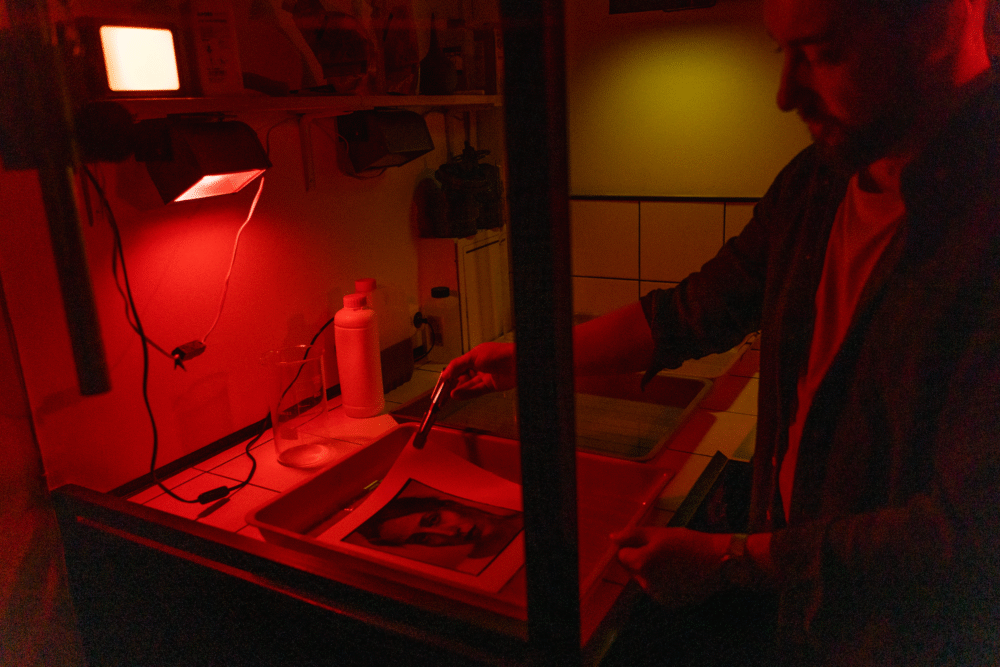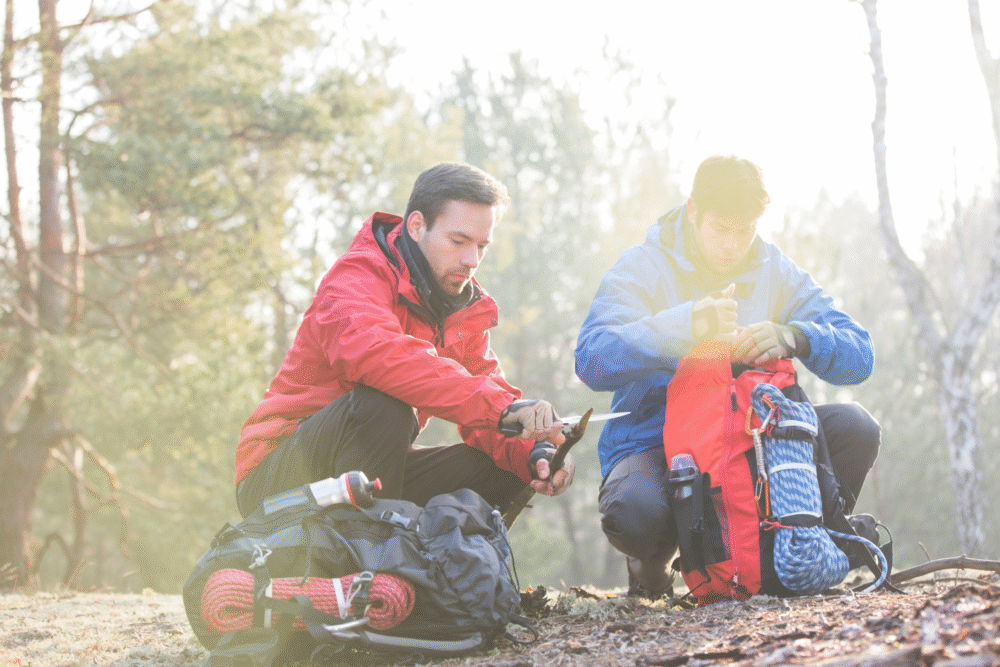Old-school rituals are being revived as a digital detox.

Gen Z, a generation raised on screens and constant connectivity, is paradoxically turning to old-school rituals as a form of rebellion against digital burnout. The endless scroll, the constant notifications, and the pressure to perform online have left many feeling disconnected and overstimulated. These analog practices are a way to consciously unplug, finding a sense of peace and presence that feels elusive in the digital world. It’s a purposeful step back from the hyper-connected, fast-paced nature of modern life.
These rituals offer a tangible, rewarding experience that modern technology, for all its convenience, often fails to provide. They are a way to reclaim time and attention, focusing on simple, deliberate actions that ground you in the present moment. From the tactile sensation of a physical object to the quiet contemplation of a slow process, these habits are not just a nostalgic trend but a genuine search for meaning and authenticity in a world that often feels ephemeral.
1. Reading a physical book offers a welcome escape from screens.

In a world where every screen is a portal to a new distraction, the physical book stands as a defiant sanctuary of focused attention. Holding a book in your hands and turning its pages provides a tactile experience that grounds you in the moment, free from the constant pings and notifications of the digital world. The journey through a narrative becomes a meditative process, allowing your mind to fully immerse itself in the story without the temptation of endless scrolling. It’s a simple yet powerful act of reclaiming your focus.
This ritual is more than just a preference; it’s a deliberate choice to disconnect from the digital noise. A physical book has a clear beginning and end, offering a satisfying sense of completion that an endless stream of online content can never provide. The weight of the book, the feel of the paper, and the visual progress of the pages you’ve read create a tangible sense of accomplishment. It is a calming and peaceful way to engage with a story.
2. The art of knitting is a way to create something tangible.

In a culture of fast consumption and digital creation, the methodical, hands-on process of knitting offers a soothing and productive alternative. The repetitive motion of the needles and the slow, visible progress of a scarf or blanket taking shape provides a meditative rhythm that quiets a busy mind. This ritual is a rejection of the instant gratification culture, celebrating the value of time and patience. It’s a way to create a physical object with your own hands, imbuing it with a sense of purpose and personal effort.
Knitting is a powerful antidote to feeling burnt out by the ephemeral nature of digital work. The end result is not a fleeting post or a temporary file but a tangible item that can be used or gifted. This craft offers a unique sense of accomplishment, a quiet confidence that comes from turning a simple ball of yarn into a work of art. The focus required for each stitch provides a grounding effect, pulling you into the present moment and away from the constant noise of the digital world.
3. Writing with a fountain pen adds an element of mindfulness.

The simple act of writing has been transformed into a mindful ritual with the use of a fountain pen. The process of inking the pen, the feel of the nib gliding across the paper, and the deliberate pressure required to form each letter forces a slow, more intentional approach to putting thoughts down. This ritual is a conscious departure from the speed and convenience of typing, transforming note-taking or journaling into an elegant and thoughtful experience. The beautiful lines and rich ink become a form of art.
This practice is a powerful way to slow down and connect with your own ideas. It’s a quiet rebellion against the quick, often careless nature of digital communication. The effort required to use a fountain pen makes you consider each word, turning writing into a more reflective and personal act. The distinct look of the ink on paper and the physical artifact you create offer a tangible record of your thoughts.
4. Brewing pour-over coffee is a quiet morning meditation.

Pour-over coffee is more than just a way to get caffeine; it’s a deliberate morning ritual that provides a moment of calm before the chaos of the day begins. The process—from grinding the beans and heating the water to slowly pouring in a circular motion—demands your full attention and patience. It’s a mindful activity that engages the senses, with the aroma of the fresh grounds and the slow drip of the coffee. This habit transforms a daily routine into a quiet, focused meditation.
This ritual offers a powerful counterpoint to the rush of grabbing a quick coffee on the way out the door. It’s a way to intentionally slow down and savor a moment of self-care. The effort and care put into brewing a perfect cup provides a sense of accomplishment and a delicious, tangible reward. This practice teaches you to appreciate the small, deliberate actions in your day, providing a peaceful and grounding start to your morning.
5. Developing your own film is a tangible art form.

In a world of instant digital photos, developing film at home is a hands-on ritual that reconnects you to the physical nature of photography. The process, from loading the film into a tank in a dark room to carefully mixing and pouring chemicals, is a precise and patient art. It’s a slow-paced journey that culminates in the magical reveal of an image, an experience that is deeply satisfying. This ritual transforms a fleeting moment into a tangible, permanent piece of art.
Developing film is a powerful way to rebel against the fleeting, disposable nature of digital photography. The limited number of shots on a roll forces a more thoughtful and deliberate approach to capturing a moment. The subtle imperfections and unique character of film photography are celebrated, not discarded. This practice offers a rewarding sense of creation and ownership, a connection to the material process that feels worlds away from clicking a button and seeing an image instantly appear.
6. Curating your own vinyl collection offers a deep listening experience.

Streaming music has made every song in the world available in an instant, but collecting vinyl is a ritual that reintroduces intentionality and permanence to music. The process of physically going to a record store, flipping through bins, and carefully selecting an album is a rewarding journey of discovery. Putting the record on the turntable and listening to the album in its entirety, as the artist intended, creates a focused and immersive experience that is a stark contrast to the passive nature of playlists and shuffled songs.
This habit is a direct response to the feeling of being overwhelmed by infinite choices. A vinyl collection is a personal and curated library, a tangible representation of your tastes and a physical connection to the artists you love. The warm, rich sound of a record and the physical act of dropping the needle on the groove create a deeply satisfying sensory experience. This ritual offers a moment of deliberate focus, a time to truly listen to music.
7. Gardening is a grounding way to connect with nature.

Gardening is a ritual that provides a powerful sense of connection to the natural world and a profound antidote to digital burnout. The process of preparing the soil, planting seeds, and tending to growing plants offers a slow, rhythmic activity that grounds you in the present moment. It’s a hands-on, rewarding experience that offers a direct and tangible result for your efforts, whether in the form of beautiful flowers or fresh vegetables. This habit is a way to step away from the artificial glow of a screen and get your hands dirty.
This practice is a living, breathing testament to patience and care. It teaches you to appreciate the slow cycles of nature and the satisfaction of nurturing something from seed to fruition. The quiet moments spent in a garden, away from the constant noise of digital life, are deeply therapeutic and calming. Gardening offers a sense of purpose and connection to a process that is entirely separate from the fast-paced, online world, providing a peaceful retreat for your mind.
8. The practice of whittling is a quiet form of creation.

In an era of instant and often digital creations, whittling stands out as a slow, deliberate, and deeply meditative ritual. The process of taking a simple block of wood and slowly carving it into a shape with a knife requires patience, focus, and a steady hand. It’s a quiet and engaging activity that allows your mind to settle into a rhythm, pushing all other thoughts aside. This habit is a powerful way to disconnect from the constant mental noise of technology and reconnect with a sense of craftsmanship.
Whittling offers a unique sense of accomplishment, turning a simple piece of material into a work of art with your own hands. The imperfect lines and rough edges of the finished piece are a testament to the process, a physical record of the time and care invested. This practice teaches you to find beauty in simplicity and to appreciate the slow, deliberate journey of creation. It’s a deeply calming and satisfying way to use your hands and your mind.
9. Doing a physical jigsaw puzzle is a cooperative, mindful game.

While digital games offer a quick dopamine hit, the ritual of completing a physical jigsaw puzzle provides a sustained, mindful, and often cooperative challenge. The process of sorting pieces, finding patterns, and slowly building an image is a focused activity that requires patience and a quiet mind. It’s an analog game that brings people together around a table, fostering conversation and shared effort without the distraction of screens. The puzzle becomes a collective project, a communal art piece built one piece at a time.
This practice is a powerful antidote to the feeling of digital burnout because it offers a clear and tangible goal with a satisfying, visible result. There is no leaderboard or notification, just the quiet satisfaction of finding a piece that fits perfectly. Completing a puzzle provides a sense of accomplishment that is both personal and shared. This ritual is a wonderful way to slow down, engage with a clear challenge, and enjoy a peaceful, screen-free moment with others.
